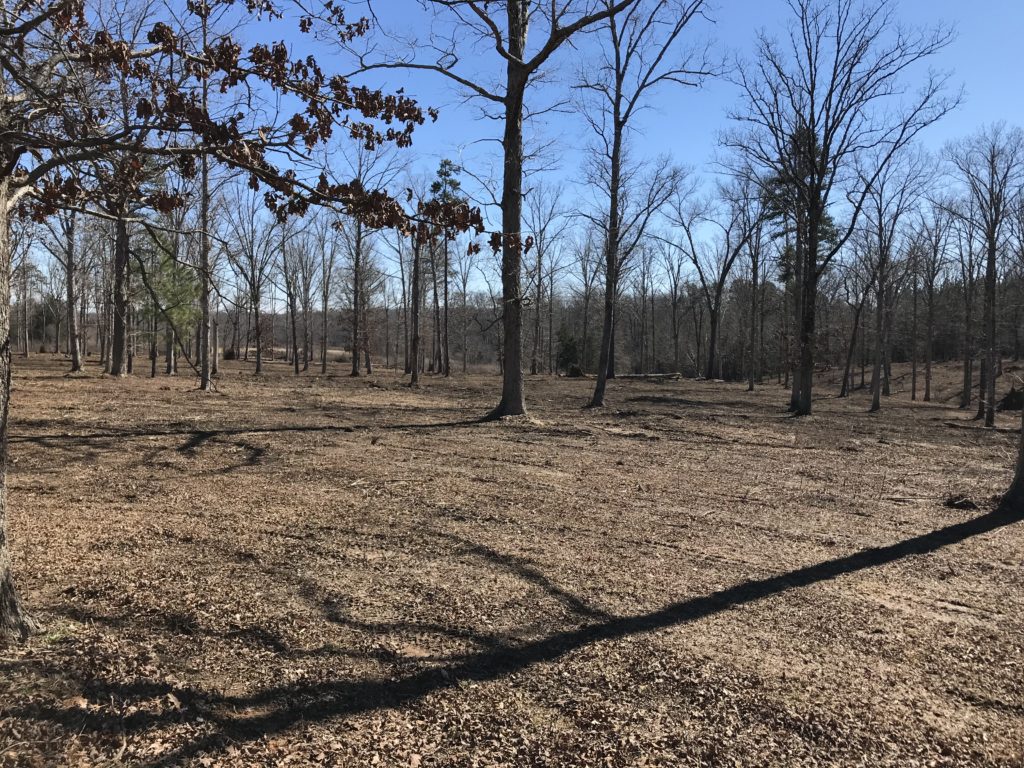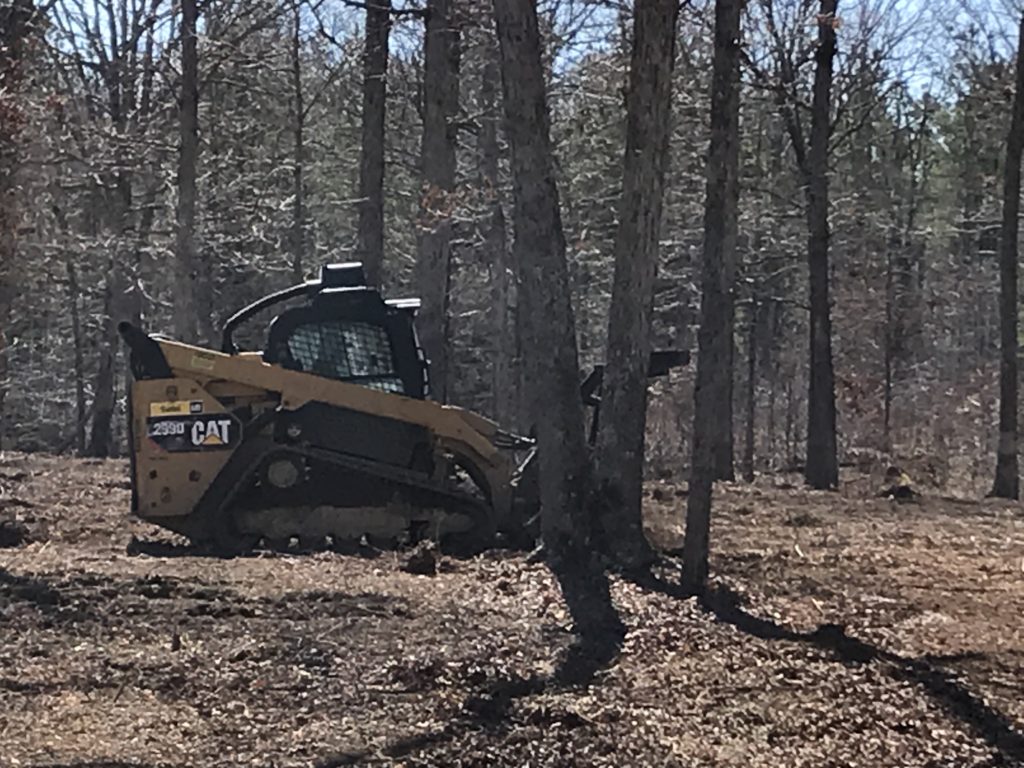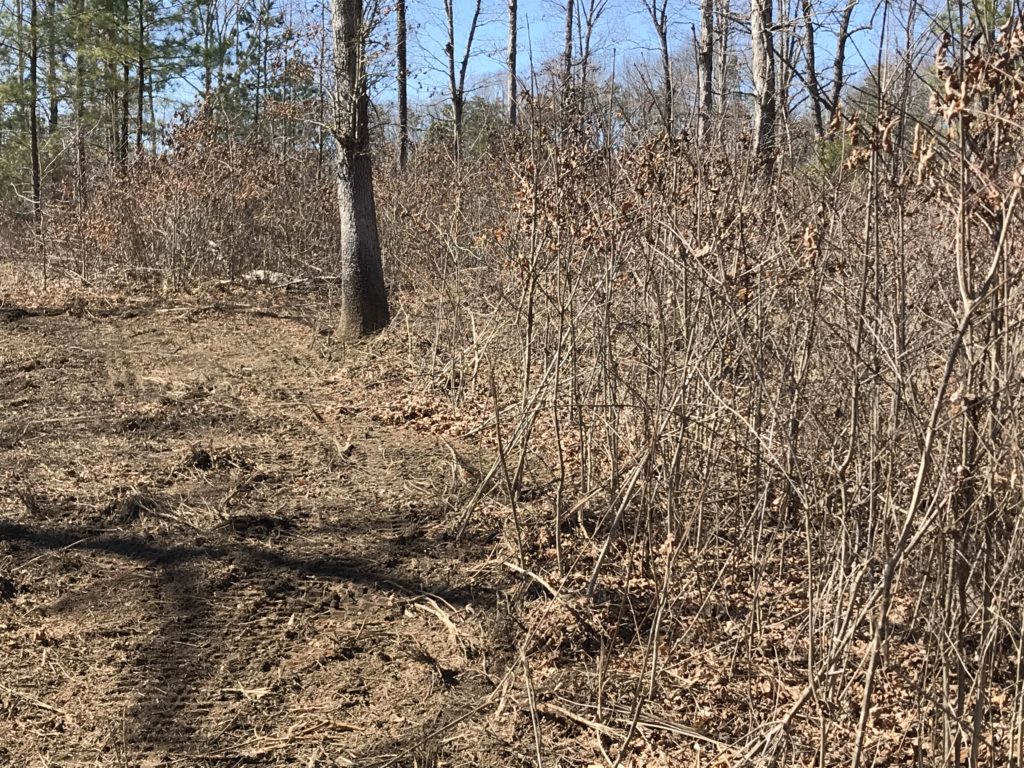Before I get too deep into the mulching business, I want to write a few lines of thanks to one of our recently departing private lands biologists. Justin Folks, who many of you know, spent 8 ½ years as a private lands wildlife biologist on our team. He fit in like a hand into a weathered baseball glove—which he played for Bridgewater College during his studies there. We pride ourselves on hiring people who have a positive attitude, a strong work ethic, and a thirst to learn, and Justin fit that bill and then some. Proving to be a consummate team player, Justin always worked to continue to improve. He was never satisfied with the status quo in terms of his knowledge and his ability to translate it to our citizens and partners. Among his many accomplishments while a part of our team were the eBook Bargain Basement Bobwhites, the booklet “Beyond the Bonfire: A Primer on Prescribed Fire for Virginia’s Private Landowners,” and the Excel-based wildlife seed calculator. He was also instrumental in developing our Facebook page “Virginia Bobwhite Bulletin.” The list could go on, but he is a humble person who does not like to “run on” about himself. He also became a trusted friend to all of us, and I know I have enjoyed numerous bird hunts with him over the years where I admired his enthusiasm for the sport—and realized what good shots former baseball pitchers make! Luckily, Justin did not go far. In fact, he now works for the Department of Wildlife Resources (DWR) in the position of District Wildlife Biologist back in “the Valley,” in the counties he grew up in. We are all happy for Justin and his family, and we look forward not only to his future with DWR, but his continued friendship. Justin, we can’t thank you enough for all you did for the private lands team.
Now, a few lines about the practice of what many term “forestry mulching”. Most of you will be familiar with this technique, but for those who are not, a forestry mulcher is basically a very large, broad stump grinder on tracks or wheels. These machines come in many sizes, from smaller “Bobcat” mounted grinding heads, to huge 350 horsepower “Tigercats.” You will see them used in home lot preparation in many cases. They can make short work out of logging debris and stumps. They can take what many would refer to as a “mess” and turn it into a fairly workable piece of ground in short order. They grind logs, debris, brush, stumps, etc., down to ground level, leaving behind, well, mulch, hence the name.

Applications in wildlife management include but are not limited to: helping create pine or oak savanna by rapidly cleaning out the understory in thinned stands, reclaiming old fields too far gone for bush-hogging or control with fire or disking, creating fire lines fairly quickly (though the residual debris has to have eyes kept on it when prescribed burning), quickly establishing areas for food plots (though caveats apply), and establishing or reclaiming forest roads and trails. I included a few photos I took recently at Amelia Wildlife Management Area (WMA) as a contractor employed their tracked machine to help us regain control of an oak savanna. The area had grown up into heavy hardwood brush and saplings, and our goal was to set succession back and develop a more herbaceous forb- and grass-dominated understory typical of a savanna. None of us, including a state agency, are immune to falling behind in our habitat upkeep. Bad weather, low budgets, short staffing levels, and unforeseen events like COVID-19 can all negatively impact our ability to manage habitat effectively with traditional techniques. Forestry mulching sometimes gives us an option of doing something other than throwing up our hands and walking away (which is a valid option in some cases).

Why not just use a dozer? Good question. A dozer can be a great management tool in its own right, and in my humble opinion, a dozer is better for fire lines and creating new wildlife fields in a clear-cut. For example, using a dozer, the residual stumps can be removed, roots and all, and the clearing created can nearly immediately be worked with a tractor and disk. There will also be much less hardwood saplings sprouting from the stumps remaining underground like there will be when a mulcher is used after a hardwood clear-cut. And fire lines down to bare dirt always make me feel better. But in both cases there will likely be some piles of stumps and debris somewhere nearby after dozing. And dozing can also create erosion issues if care is not used.
In the case where you desire to reclaim or create a pine or oak savanna, a dozer may cause too much damage to the roots of the residual trees as stumps from cut trees are being removed. And in an old field setting where saplings have grown so big that prescribed fire will no longer control them or have become too big for bush-hogging, a dozer may cause more damage than is necessary to reclaim the field. Not to mention, something has to be done with the debris pushed up. A forestry mulcher in these settings can do the job with minimal damage. In the case of the old field, all that is needed is to get the vegetation back down to a level where it can be controlled with fire, disking, or mowing. Some use of herbicides may increase the effectiveness of mulching through time by helping to control the hardwood sprouts that will come up soon after mulching where rootstock remains. Or in some cases, it will be better to use herbicides before the mulching occurs to insure maximum leaf contact and transport of chemical to the plants’ root system. There are multiple ways these practices can be applied and each site should be evaluated for the best options.

Forestry mulching, like dozing, is expensive unless you have your own equipment and are doing the work yourself. And I suspect while some landowners might have their own dozer, very few have a mulcher. Forestry mulching can run from about $700 to $1,500 an acre or more, so it is obviously not a technique to be used on a whim. At Amelia WMA, the oak savanna is a demonstration project of about 30 acres. We had fallen behind on burning due to weather and being short-staffed, and herbicides alone did not seem to accomplish our goals. We decided it was worth the cost to reclaim the savanna. It is a unique habitat type, and we want to continue to learn from our efforts to manage it. The mulching now allows us more management options including bush-hogging if we fall behind again on our burning. Prior to the mulching, there was too much debris and stumpage remaining to allow bush-hogging. And we now have many options for installing and maintaining fire lines that will make it easier to burn the unit using backing fire, which is better at controlling hardwood sprouts. While it’s expensive and may not apply in all situations, forestry mulching should be kept in mind when you fall behind on your wildlife habitat maintenance.




